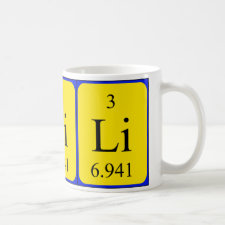
Authors: Luo XB, Zhong WP, Luo JM, Yang LX, Long J, Guo B, Luo SL
Article Title: Lithium ion-imprinted polymers with hydrophilic PHEMA polymer brushes: The role of grafting density in anti-interference and anti-blockage in wastewater.
Publication date: 2017
Journal: Journal of Colloid and Interface Science
Volume: 492
Page numbers: 146-156.
DOI: 10.1016/j.jcis.2016.12.065
Alternative URL: http://www.sciencedirect.com/science/article/pii/S0021979716310712
Abstract: Hydrophilic poly(2-hydroxyethyl methacrylate) (PHEMA) brushes were modified onto the surface of ion-imprinted polymers (IIPs) via addition-fragmentation chain transfer (RAFT) polymerization. Four different grafting densities (1.43, 1.31, 1.17 and 1.06 chains/nm2) of IIPs were obtained, revealed by analysis using gel permeation chromatograph (GPC) and Brunauer-Emmett-Teller (BET). All the grafted IIPs had good anti-interference properties compared to the ungrafted IIPs, although the adsorption capacity of the ungrafted IIPs was higher than that of grafted IIPs in pure water. Among them, the grafted IIP3, with a grafting density of β = 1.17 chains/nm2, exhibited superior anti-interference ability in silica and polymer flocculant simulated wastewater; moreover, it remained steady after 10 adsorption-desorption cycles. SEM-EDX and XPS data revealed anti-interference and anti-blockage mechanisms in which hydrophilic PHEMA brushes could effectively adhere to fine particles and flocculants through Van der Waals force interactions, which make the imprinted cavities well protected in a complex wastewater environment. Moreover, these grafted IIPs exhibit similar adsorption rate constants that are approximately 2 times greater than those of ungrafted IIPs, indicating that the PHEMA brushes increased the accessibility to Li(I) due to hydrophilic modification
Template and target information: lithium ion, Li(I)
Author keywords: Wastewater, RAFT polymerization, Grafting density, Ion-imprinted polymer, Anti-interference



Join the Society for Molecular Imprinting

New items RSS feed
Sign-up for e-mail updates:
Choose between receiving an occasional newsletter or more frequent e-mail alerts.
Click here to go to the sign-up page.
Is your name elemental or peptidic? Enter your name and find out by clicking either of the buttons below!
Other products you may like:
 MIPdatabase
MIPdatabase









